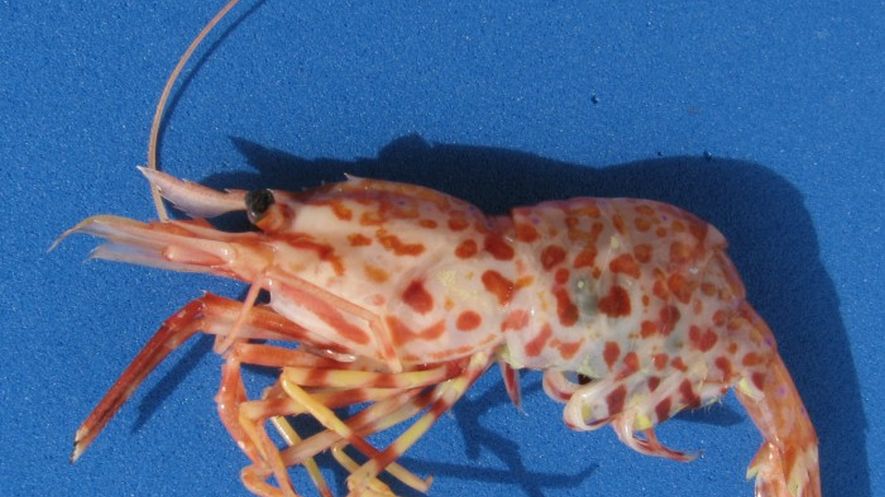By Lauren Hartling, interpretation specialist at the Vancouver Aquarium Marine Science Centre.
Shrimp. They look like aliens with their giant antennae, they seem to have an impossible number of legs, and they taste delicious (when they are sustainable Ocean Wise shrimp). There are roughly 2,000 different species of shrimp worldwide, but often we only think of a few species, such as tiger prawns in mangroves, colourful cleaner shrimp living in coral reefs, or the spot prawns here on the West Coast. But there are shrimp species thriving in waters all over the world — including in the chilly Arctic.
Meet the polar shrimp (Lebbeus polaris), which is surprisingly common in northern waters. Polar shrimp are incredibly colourful creatures with their red stripes over an opaque white background. Females become even more stunning when carrying eggs which add a vivid blue/green hue to the shrimpy tail where the eggs are held. Its eggs like this that excite British Columbia’s water biologists.
While the adult stage of polar shrimps has been documented over the years — for example, they can reach a whopping 90 mm in length (about the length of an average deck of cards) — the larval stages were a mystery. This is in part due to the difficulty of getting to the Arctic. Luckily, Vancouver Aquarium Marine Science Centre has many Arctic experts on staff. In fact, they’ve been adventuring to the Arctic since 1968.
But it wasn’t until their Arctic trip of 2014 that they gained some some important insights on the mysteries of polar shrimp larvae. This was the first time the team had ventured to Cambridge Bay, a small hamlet in Nunavut. There, they had an opportunity to explore local species, set up a base camp for collecting specimens and get to know the locals. The team also included John Fisher, a senior biologist at the Aquarium responsible for the exhibits in Canada’s Underwater Arctic gallery. During his trip, John and fellow Aquarium biologists discovered a “pregnant,” or ovigerous, female polar shrimp and brought her back to specialized Arctic holding areas which are behind the scenes at the Aquarium. Once the larva hatched, John carefully raised them onsite, which was extraordinary as it had never been done as far as we know.
Polar shrimp larva naturally grow very slowly in their cold-water surroundings — temperatures range from just 1.5 to 3.5°C (34.7 – 38.3°F) — as they eat finely grated plankton. John has been documenting everything about their progress through pictures and notes. This seemingly simple action of note-taking is a very big deal. It makes life for other researchers much easier when studying polar shrimp because it provides a better understanding of the ever-changing Arctic food web. It is thrilling to know that we are a part of enhancing the global knowledge of polar shrimp and making a mammoth contribution to science!
For John, another rewarding part of working with these animals is putting polar shrimp on the radar for visitors. “If people bring up an Arctic invertebrate in conversation and share it with someone else, that’s great, that’s my motivation,” he said. Through the displays of Arctic life in Canada’s Arctic gallery, John connects more than one million annual visitors to the Aquarium with this tiny, but important, piece of the Arctic puzzle.
For more info about Canada’s North and what you can do to protect it, click here.



